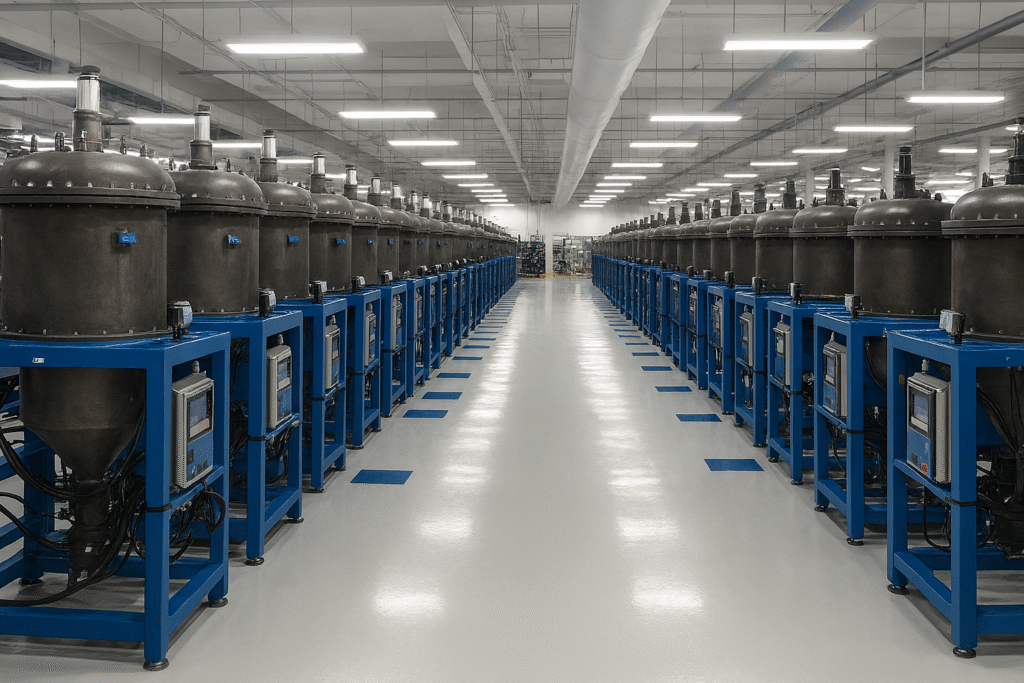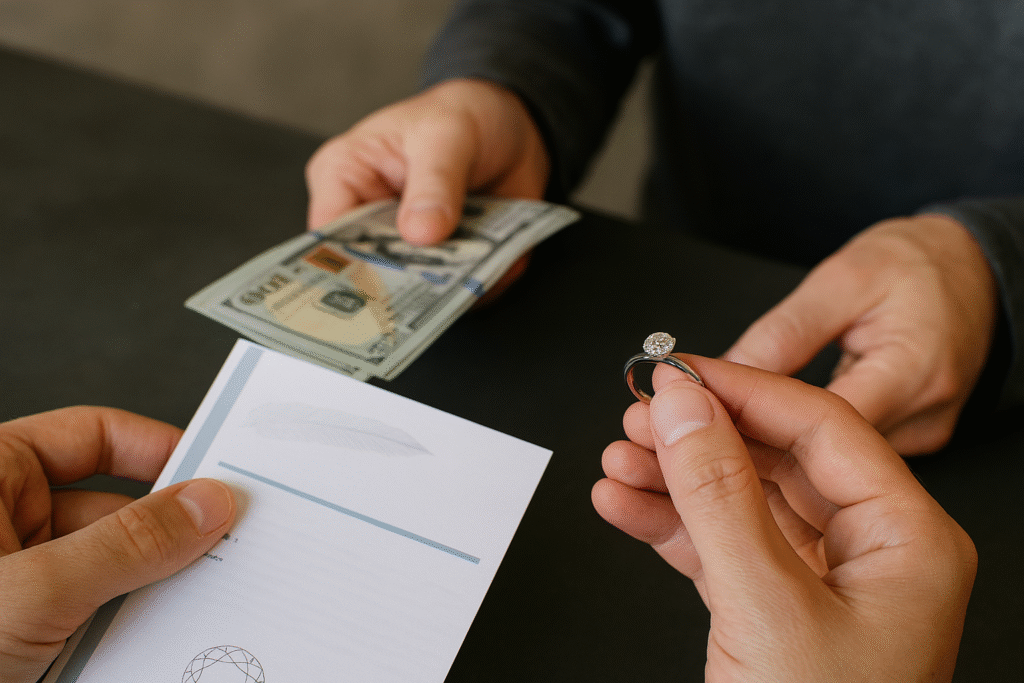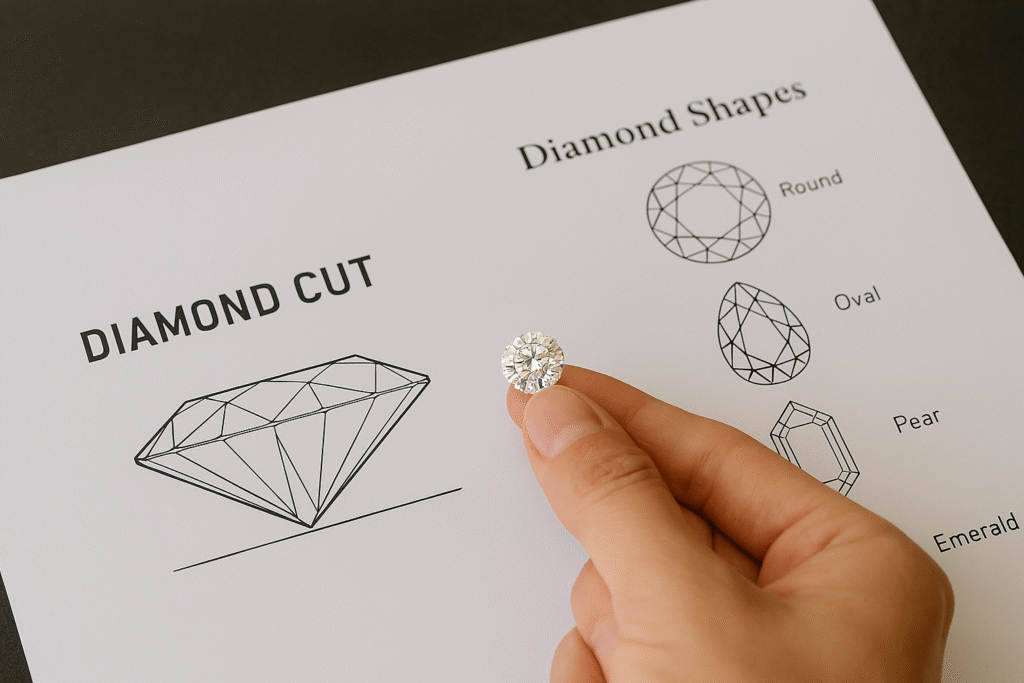KIRA Jewels, the world’s largest grower of CVD lab-grown diamonds, has announced a major expansion. The company has scaled from 2,600 to 4,000 CVD reactors, making it the most dependable supplier of sustainable lab-grown diamonds worldwide.
Monthly Production Capacity
- 250,000 polished carats produced each month
- 1 million sq. ft. solar-powered facility in India
- Powered by 75 MW solar energy, doubling to 150 MW by 2026
- Over 8,000 skilled artisans ensuring precision and craftsmanship
“The key is reliability,” said a KIRA spokesperson. “Our partners trust us because every diamond is grown, cut, and polished in-house with full transparency.”
Largest U.S. Inventory of Lab-Grown Diamonds
KIRA Jewels maintains the largest lab-grown diamond inventory in the U.S., with:
- 150,000 certified stones available for next-day delivery from New York
- Over 250,000 certified diamonds globally across all shapes, sizes, and grades
- 4,700+ partners worldwide, from manufacturers and designers to retail chains and independent jewelers
This vertical integration ensures consistent quality, sustainability, and scalability.
Certifications and Sustainability
- SMETA and SEDEX certified operations
- Solar-powered growth with reduced carbon footprint
- Ethical sourcing and production chain
FAQ: KIRA Jewels Expansion
Q: Why is KIRA expanding to 4,000 CVD reactors?
A: To meet rising global demand and ensure partners get consistent, high-quality diamonds with reliable supply.
Q: How many carats does KIRA produce every month?
A: Currently 250,000 polished carats, making it the largest CVD lab-grown diamond grower in the world.
Q: What makes KIRA different from other lab-grown diamond companies?
A: Unlike many distributors, KIRA is fully vertically integrated, producing every diamond in-house. This ensures quality, transparency, and long-term trust.
Q: Does KIRA follow sustainable practices?
A: Yes. The facility runs on 75 MW solar power, expanding to 150 MW, and holds SMETA and SEDEX certifications.
Industry Recognition
- Backed by the Kiran family’s four-decade diamond legacy
- Recognized as the most scalable lab-grown diamond supplier worldwide
- Trusted by 4,700+ global partners
Suggested Reading:
When learning about diamond certifications, check the guide on Understanding GIA and IGI Certificates.
To explore more about sustainable jewelry, check the article on Eco-Friendly Diamonds vs. Mined Diamonds.
For buyers in the U.S., read: Where to Buy Lab-Grown Diamonds in New York.
Retailers can also explore Jewelry Industry Insights section for updates.
This comprehensive global cuisine FAQ covers everything about Asian and Western food and drinks. Whether you’re exploring international cooking techniques or discovering new flavors, this global cuisine FAQ answers the most frequently asked questions about world food traditions, ingredients, and culinary practices from both Eastern and Western cultures.
Global Cuisine FAQ: Asian & Western Food & Drinks
Food reveals cultural contrasts in clear and delicious ways. From cooking methods to dining customs, Asian and Western cuisines showcase unique traditions while also offering fascinating overlaps. Below, you’ll find answers to the most common questions about these culinary worlds.
Understanding Core Differences in Cuisine
1. What distinguishes Asian and Western culinary traditions?
Asian meals often rely on rice or noodles as a foundation. Flavors usually come from soy sauce, ginger, garlic, and a wide variety of spices. Meanwhile, Western gastronomy emphasizes bread, potatoes, and pasta. Dairy plays a key role, with butter, cream, and cheese giving richness to many dishes. Herbs such as rosemary and thyme highlight European cooking. These contrasts create distinct dining habits and flavor profiles.
2. Are Asian dishes always spicy?
No, not at all. While cuisines from Thailand and parts of India feature bold use of chilies, not every dish follows this pattern. Japanese sushi, Chinese dim sum, and Korean bulgogi are mild examples. In fact, Asian cuisines range from fiery to delicate, showcasing a rich palette of flavor.
Western Breakfast Staples and Comfort Foods
1. What constitutes typical Western morning meals?
Western breakfasts often include eggs, bacon, and toast. Pancakes, waffles, and cereal are also popular choices. These hearty starts are usually enjoyed with coffee, tea, or juice, providing both energy and comfort.
2. What represents popular Western comfort foods?
Comfort foods in the West speak to nostalgia and indulgence. Creamy macaroni and cheese, pizza, and hearty casseroles are favorites. Similarly, burgers and fried chicken have wide appeal. Because they are warm, filling, and familiar, these dishes strongly connect to emotion.
Cultural Dining Practices
1. Do all Asian cultures employ chopsticks?
No. Chopsticks dominate in East Asia—China, Japan, and Korea. However, Southeast Asia prefers spoons and forks, while India and parts of the Middle East often use flatbreads or hands. This diversity highlights how food customs closely reflect culture.
2. Why are some Asian foods fermented?
Fermentation preserves food while also enhancing nutrition and flavor. Korean kimchi, Japanese miso, and Indonesian tempeh show how tradition meets health benefits. These foods are valued not only for taste but also for their role in well-being.
Common Western Beverages
1. What beverages are common with Western meals?
Western dining often features water, soda, or fresh juice. Alcohol also has a strong cultural connection, with wine served at European dinners and beer central in North America. In the southern United States, sweet iced tea is a staple.
Dietary Flexibility and Options
1. Can one discover plant-based options easily?
Yes. Asian cuisines offer tofu stir-fries, lentil dals, and vegetable curries that are naturally vegetarian. Western food, similarly, embraces plant-based eating. Salads, vegetarian pastas, and vegan burgers have grown popular, making meat-free dining accessible worldwide.
Unique Asian Drinks to Explore
1. What are some unique Asian beverages?
Asia provides a wide variety of distinctive drinks. Bubble tea, from Taiwan, combines tea with chewy tapioca pearls. Japanese sake, made from rice, holds deep cultural meaning. Strong Vietnamese iced coffee, sweetened with condensed milk, adds a bold twist compared to Western brews.
Portion Sizes and Dining Habits
1. How do portion sizes compare?
Western meals often emphasize large servings, reflecting abundance. By contrast, Asian meals are usually smaller yet balanced, encouraging sharing and mindful eating. This creates different social experiences around the table.
The Art of Fusion Cuisine
1. Is it feasible to integrate Asian and Western flavors?
Absolutely. Fusion cuisine blends traditions in creative ways. For instance, teriyaki burgers combine Japanese flavors with American fast food, while kimchi tacos bring Korean spice to Mexican street food. These playful mixes show how food bridges cultures.



